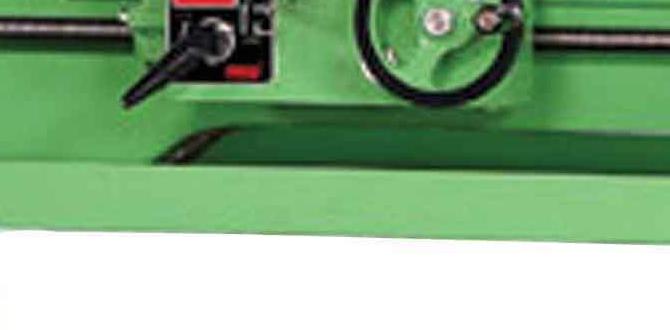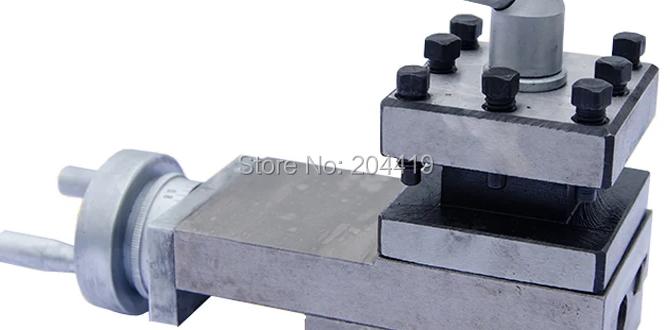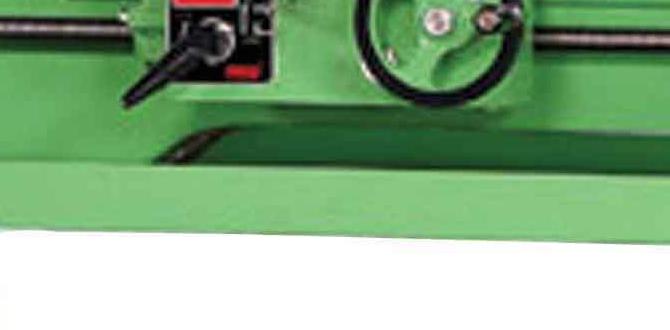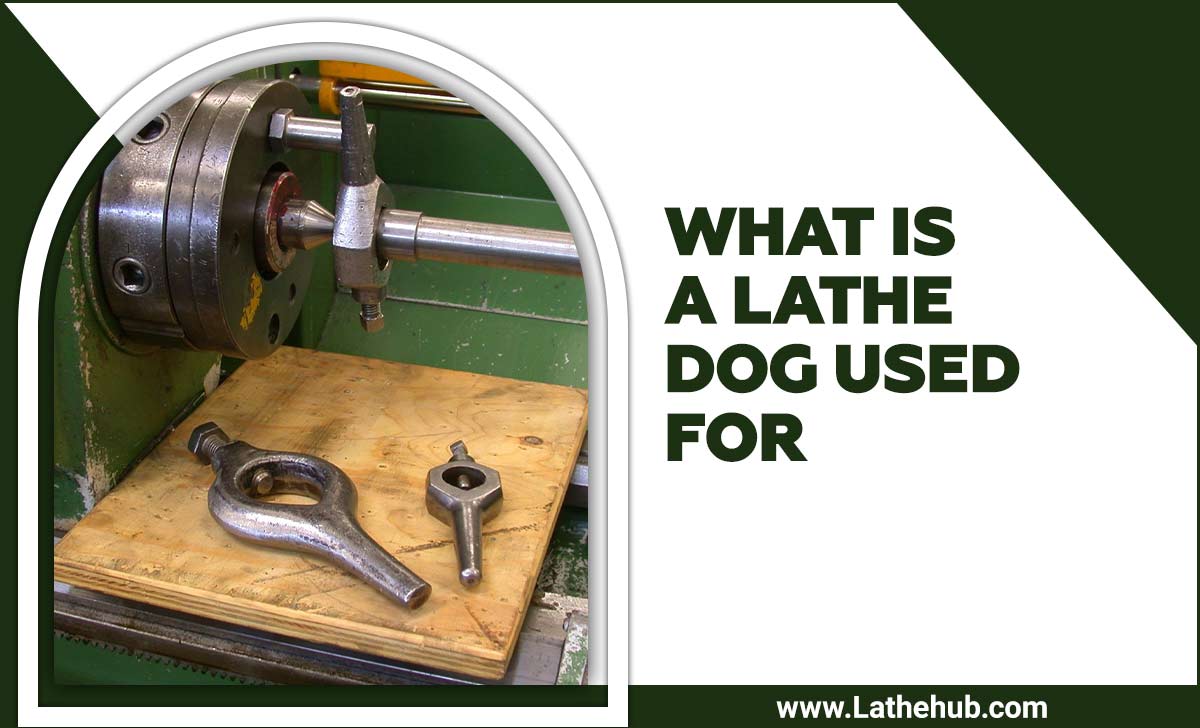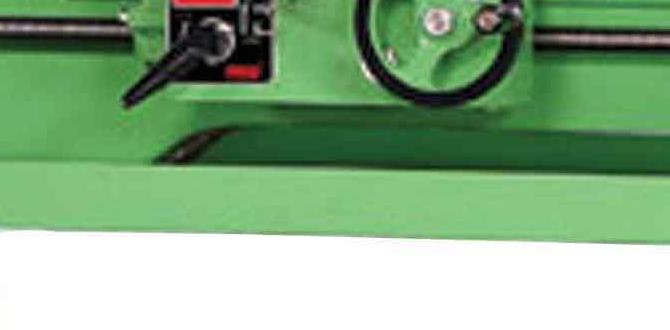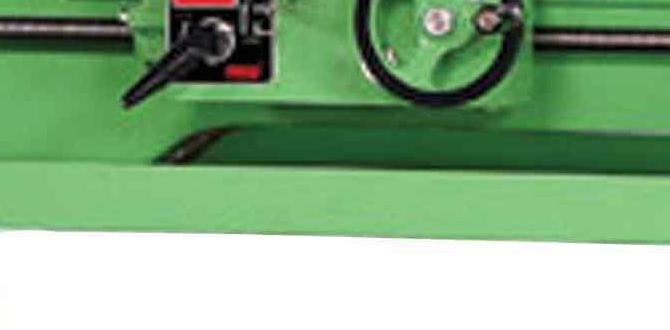A boring bar for your lathe is a genius tool that lets you accurately enlarge and finish internal diameters of workpieces, transforming tricky holes into perfect bores. This essential attachment makes previously difficult interior machining tasks straightforward and achievable for any home machinist.
Ever stared at a workpiece with a hole that’s just a bit too small, or needs to be perfectly smooth and exactly the right size? Machining those internal diameters can feel frustrating, especially when you’re starting out. You might think you need a whole slew of specialized tools, but there’s one ingenious attachment that solves this problem beautifully: the boring bar. It’s an absolute game-changer for your lathe, simplifying complex internal machining and opening up a whole new world of projects. With a little understanding and practice, you’ll be creating precise bores with confidence.
Think of it this way: just as a standard turning tool shapes the outside of your workpiece, a boring bar shapes the inside. It’s a rigid bar that holds a cutting tool, and it’s designed specifically to reach into and machine the internal surfaces of hollow parts, like tubes or pre-drilled holes. This blog post is your friendly guide to understanding what a boring bar is, why it’s so indispensable, how to choose one, and most importantly, how to use it effectively and safely on your lathe. We’ll break down everything you need to know, step-by-step, so you can tackle your next bored-out project with skill and ease!
What Exactly is a Boring Bar for a Lathe?
At its core, a boring bar for a lathe is a specialized tool designed for internal machining. It’s essentially a sturdy bar, usually made of hardened steel or carbide, that holds a single-point cutting tool. This bar is held in the lathe’s tool post, just like any other cutting tool, but it extends into the workpiece to machine the internal diameter of a hole. This process is called “boring.”
Why is it so special? Standard lathe tools are designed to cut the exterior of a spinning workpiece. You can’t just use a regular turning tool to bore out a hole; it’s not designed for that kind of engagement, and it won’t give you the precision or finish you need. A boring bar, with its rigid construction and specific cutting geometry, is engineered to handle the forces and requirements of internal cutting.
The term “boring” might sound intimidating, but it’s really just about enlarging and finishing an existing hole to a precise diameter. Think of it as making a hole straight, smooth, and exactly the size you want. This is crucial for many parts, like the inner races of bearings, the cylinders in engines, or even decorative elements in woodworking projects.
A boring bar setup typically consists of:
- The Bar: The main body, providing rigidity and a mounting point for the insert.
- The Cutting Insert (or Tool Bit): The sharp edge that actually removes material. These are often made of carbide and can be replaceable.
- Shank/Holder: The part of the boring bar that fits into the lathe’s tool post.
Why is a Boring Bar a “Genius” and Essential Tool?
The “genius” in a boring bar lies in its ability to perform one of the most critical and often challenging machining operations: accurately machining internal diameters. Without one, achieving precise bores becomes significantly harder, if not impossible, on a standard metal lathe.
Here’s why it’s an indispensable tool for any serious hobbyist or professional machinist:
- Precision Control: Boring bars allow for incredibly precise control over the diameter and finish of internal surfaces. You can achieve tight tolerances required for press fits, bearing seats, and other critical applications.
- Versatility: They come in various sizes and styles, capable of boring holes from tiny to very large. Some are designed for deep holes, while others excel at high-speed finishing.
- Improved Surface Finish: A well-used boring bar, especially with a sharp carbide insert, can leave a mirror-smooth finish inside a workpiece, far superior to drilling or reaming alone. This is vital for components that experience friction or require perfect sealing.
- Correcting Imperfections: If a hole is slightly undersized from a previous operation, or if it’s not perfectly round, a boring bar is the tool to fix it.
- Creating Specific Features: Beyond just making a hole larger, boring bars can be used to create steps, chamfers, and even internal grooves within a bore.
- Cost-Effective Solution: While there are specialized boring machines, a good boring bar for your existing lathe is a far more economical way to achieve professional-level internal machining results.
In essence, a boring bar transforms your lathe from an external shaping machine into a more complete workshop tool, capable of handling jobs that require internal precision. It’s the key to unlocking a wider range of projects and achieving a higher quality of work.
Understanding Different Types of Boring Bars
Boring bars aren’t one-size-fits-all. They come in different designs to suit various tasks, materials, and lathe capabilities. Knowing the types will help you choose the right one for your needs.
Solid Boring Bars
These are typically made from a single piece of material, often high-speed steel (HSS) or carbide. They are known for their rigidity, especially for smaller diameters. Carbide solid boring bars are excellent for finishing and can handle higher speeds.
Carbide Insert Boring Bars
These are arguably the most common and versatile type for general-purpose machining. The bar itself holds a replaceable carbide insert, which is the cutting edge. When the insert gets dull, you simply replace it, rather than grinding a whole tool bit. This makes them very convenient and cost-effective in the long run.
- Pros: Easy insert replacement, wide range of insert geometries for different materials and operations, good rigidity.
- Cons: Can be more expensive upfront than a solid HSS bar.
Tungsten Carbide and Its Importance
You’ll often hear about carbide when discussing boring bars. Tungsten carbide is an extremely hard and durable material, making it ideal for cutting tools. It allows for much higher cutting speeds and feeds compared to HSS, leading to faster material removal and better finishes, especially on tougher metals.
For more on tooling materials and their applications, the U.S. Department of Labor’s Occupational Safety and Health Administration (OSHA) provides valuable resources on machine shop safety and tool handling, which indirectly touches upon the importance of using the right materials for the job: [OSHA Standard Interpretations].
Vibratory Boring Heads (for Advanced Use)
These are more sophisticated attachments that can reduce vibration during boring, leading to exceptional surface finishes. They are often used for very fine finishing passes or when working with difficult materials. While not typically a beginner’s first boring bar, they represent the pinnacle of smooth internal machining.
Boring Heads vs. Boring Bars
It’s worth a quick note on the difference between a boring head and a boring bar. A boring head is a tool holder that often incorporates an adjustable cutting tool for boring. A boring bar is the bar itself (often with an insert) that fits into a tool post or a boring head. For most home machinists starting out, a simple carbide insert boring bar that fits directly into the tool post is the most common and practical choice.
Choosing the Right Boring Bar for Your Lathe
Selecting the correct boring bar is crucial for success. A few factors need your attention:
1. Shank Size
This is the most critical starting point. Your boring bar’s shank must fit securely into your lathe’s tool post. Common shank sizes include 3/8″, 1/2″, and 5/8″ for smaller to medium lathes. Measure the height and width of your tool post opening to determine the size you need.
2. Reach and Diameter Capacity
Consider the range of hole diameters and depths you intend to bore. Boring bars are rated for a specific range of hole sizes. A bar with a long reach might be necessary for deep holes, but it also introduces potential for chatter or vibration if not rigid enough.
Rule of Thumb: The longer the bar extends from the tool post, the more susceptible it is to vibration. Aim for the shortest bar possible for the job.
3. Material and Insert Type
For general metal machining, carbide inserts are highly recommended due to their hardness and ability to handle various metals. Different carbide grades and geometries (shapes) exist for different materials:
- General Purpose Steel: Use inserts with a slightly positive rake angle.
- Aluminum/Plastics: Use inserts with a sharp, highly polished edge and a positive rake.
- Cast Iron/Hard Materials: Use more robust inserts, often with a neutral or even negative rake, and grades designed for abrasion resistance.
If you’re a beginner and planning to machine common steels and aluminum, a general-purpose carbide insert boring bar will serve you well.
4. Rigidity
A more rigid bar will result in cleaner cuts and a better finish. Solid carbide bars offer excellent rigidity for small diameters. For larger diameters, a thicker steel or carbide-coated bar is preferable. Avoid bars that look flimsy or too long relative to their diameter.
5. Application: Roughing vs. Finishing
Some bars are better suited for roughing (removing a lot of material quickly), while others are designed for finishing (achieving a precise size and smooth surface). For beginners, a bar capable of good finishing is often more valuable, as roughing can sometimes be done with a standard tool if necessary. Many carbide insert bars can do both with the right insert.
Essential Tools and Setup for Boring
Before you even touch the boring bar to your workpiece, gather everything you need for a successful setup. This ensures safety, efficiency, and accuracy.
What You’ll Need:
- Boring Bar: Selected based on the size of your tool post and the bore you need to machine.
- Lathe Chuck or Fixture: To securely hold your workpiece.
- Tailstock (Optional but Recommended): For long or unsupported workpieces, the tailstock can provide extra support. A center rest or steady rest can also be used for very long work.
- Cutting Fluid or Lubricant: Essential for most metal boring operations. It cools the cutting edge, lubricates the cut, and helps clear chips.
- Measuring Tools: A good quality inside micrometer or bore gauge is crucial for accurately measuring your finished bore. A dial caliper can get you close, but for precision, dedicated internal measurement tools are best.
- Tool Post Grinder (Optional): For very fine finishing, some professionals use these.
- Wrenches: To secure the boring bar in its holder and to tighten the tool post clamp.
- Safety Glasses: Non-negotiable. Always wear them.
- Chip Brush/Hook: To clear away chips safely.
Setting Up the Boring Bar:
Proper setup is key to avoiding vibration and achieving a good finish.
- Secure the Workpiece: Mount your workpiece firmly in the lathe chuck or other holding device. Ensure it’s indicated if concentricity is critical.
- Position the Boring Bar in the Tool Post:
- Insert the boring bar shank into your tool post.
- Ensure the bar is clamped very securely. Any movement here will result in a poor cut.
- Height Adjustment: This is critical. The cutting tip of the boring bar should be set exactly on the centerline of the lathe spindle. You can achieve this by using shims or by adjusting the tool post height if it’s adjustable. Too high or too low will result in poor chip formation and potentially a bad finish or tool breakage. Place a straight edge across the lathe bed and align the tip of the boring tool with it.
- Align the Boring Bar:
- Position the boring bar so it is perfectly perpendicular to the lathe spindle. You can check this by indicating the face of the boring bar against the spindle. It should read zero runout.
- Pre-tensioning (Optional but Recommended): For very precise work, some machinists will slightly pre-tension the boring bar by rotating the compound rest slightly away from the direction of cut. This helps to minimize chatter.
- Set Cutting Speed and Feed Rate: Consult charts or use your experience to set appropriate speeds and feeds for the material you are cutting. Generally, boring is done at slower speeds than external turning.
- Apply Cutting Fluid: Start the flow of cutting fluid to the cutting area before engaging the tool.
Step-by-Step Guide: How to Bore with a Lathe
Now that you’re set up, let’s get to the actual boring process. Remember to take light cuts, especially when you’re learning.
Step 1: Prepare Your Lathe and Workpiece
Ensure your workpiece is securely mounted and that you’ve followed the setup steps above, paying close attention to the boring bar’s height and alignment. Double-check your safety glasses!
Step 2: Approach the Hole
Carefully advance the boring bar towards the opening of the hole you need to bore. Do this with the lathe spindle stopped or rotating very slowly, using the handwheel.
Step 3: Set Your Depth of Cut
Once the tip of the boring bar is just at the edge of the hole, engage the automatic feed or use the handwheel to begin the cut. For most materials and a good finish, a light depth of cut is best. A common starting point is 0.010 to 0.020 inches (0.25 to 0.5 mm) for finishing passes. For roughing, you can go deeper, but always listen to the machine and feel for vibrations.
Step 4: Engage the Feed and Cut
Start the lathe spindle at your chosen speed. Begin the feed. If using automatic feed, select a slow to moderate feed rate. If using the handwheel, ensure a consistent and steady advance. You should hear a steady cutting sound and see chips being produced. Keep the cutting fluid flowing.
Step 5: Complete the Bore
Continue feeding the boring bar through the entire length of the hole. Once you have cleared the end of the workpiece, stop the feed. Then, retract the boring bar from the hole while the spindle is still turning (if you’re just completing a pass) or after stopping the spindle, depending on your preference.
Step 6: Measure and Inspect
Stop the lathe. Carefully remove the boring bar. Use your measuring instrument (inside micrometer, bore gauge) to measure the diameter of the bored hole. Check for:
- Diameter: Is it within your desired tolerance?
- Roundness: Is it perfectly round?
- Surface Finish: Is it smooth?
Step 7: Adjust and Re-bore (If Necessary)
If your bore is slightly undersized, you can continue boring with the same setup, taking another light cut. If it’s oversized, you’ll need to rethink your approach or the workpiece itself. If the surface finish is poor, check for:
- Dull Insert: Replace it.
- Excessive Chip Buildup: Adjust feed/speed or improve chip evacuation.
- Vibration: Re-check tool height, rigidity, and workpiece clamping.
- Incorrect Cutting Fluid: Ensure you’re using the right one.
Deep Hole Boring Considerations
For deep holes, chip evacuation becomes a major challenge. You may need to:
- Retract the tool periodically to clear chips.
- Use high-pressure coolant systems if available.
- Employ specialized deep-hole boring bars designed for efficient chip removal.
- Consider the rigidity of the bar – shorter, thicker bars are generally better for deep boring if they can reach.
Troubleshooting Common Boring Problems
Even with careful setup, you might encounter issues. Here’s how to tackle some common boring bar problems:
| Problem | Possible Causes | Solutions |
|---|---|---|
| Rough Surface Finish | Dull cutting insert; Incorrect cutting speed or feed rate; Excessive vibration; Incorrect tool height (not on centerline); Improper cutting fluid. | Replace insert; Adjust speed/feed settings; Check tool post for loose nuts, ensure bar is rigid, check workpiece clamping; Re-set boring bar height precisely on centerline; Use appropriate cutting fluid. |
| Hole is Not Round (Out-of-Round) | Workpiece not securely clamped; Boring bar is too flexible for the operation; Tool post is not rigid or loose; Lathe ways/spindle have excessive play. | Re-clamp
|

